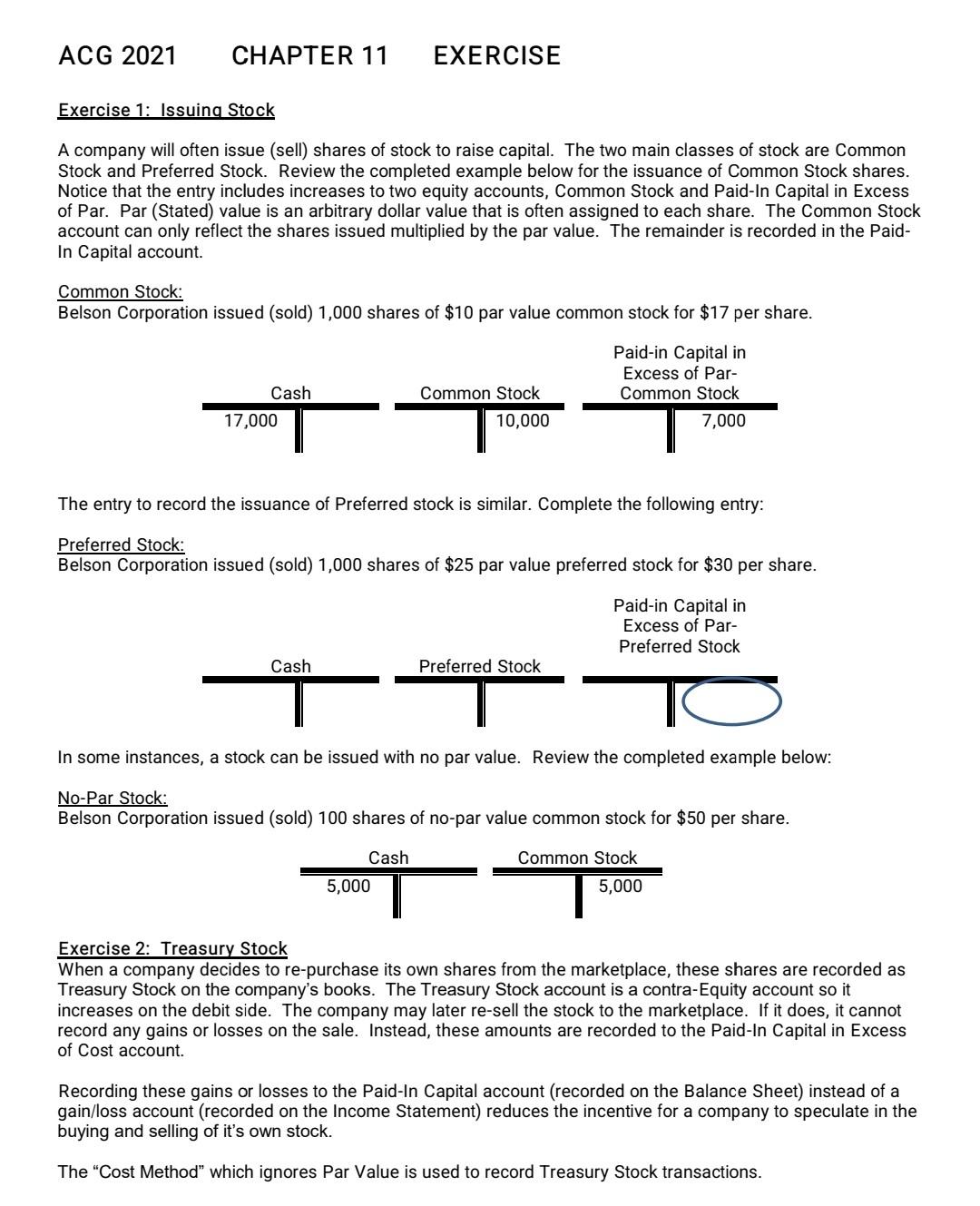Answered step by step
Verified Expert Solution
Question
1 Approved Answer
Exercise 1: Issuing Stock A company will often issue (sell) shares of stock to raise capital. The two main classes of stock are Common Stock

Exercise 1: Issuing Stock A company will often issue (sell) shares of stock to raise capital. The two main classes of stock are Common Stock and Preferred Stock. Review the completed example below for the issuance of Common Stock shares. Notice that the entry includes increases to two equity accounts, Common Stock and Paid-In Capital in Excess of Par. Par (Stated) value is an arbitrary dollar value that is often assigned to each share. The Common Stock account can only reflect the shares issued multiplied by the par value. The remainder is recorded in the PaidIn Capital account. Common Stock: Belson Corporation issued (sold) 1,000 shares of $10 par value common stock for $17 per share. The entry to record the issuance of Preferred stock is similar. Complete the following entry: Preferred Stock: Belson Corporation issued (sold) 1,000 shares of $25 par value preferred stock for $30 per share. In some instances, a stock can be issued with no par value. Review the completed example below: No-Par Stock: Belson Corporation issued (sold) 100 shares of no-par value common stock for $50 per share. Exercise 2: Treasury Stock When a company decides to re-purchase its own shares from the marketplace, these shares are recorded as Treasury Stock on the company's books. The Treasury Stock account is a contra-Equity account so it increases on the debit side. The company may later re-sell the stock to the marketplace. If it does, it cannot record any gains or losses on the sale. Instead, these amounts are recorded to the Paid-In Capital in Excess of Cost account. Recording these gains or losses to the Paid-In Capital account (recorded on the Balance Sheet) instead of a gain/loss account (recorded on the Income Statement) reduces the incentive for a company to speculate in the buying and selling of it's own stock. The "Cost Method" which ignores Par Value is used to record Treasury Stock transactions
Step by Step Solution
There are 3 Steps involved in it
Step: 1

Get Instant Access to Expert-Tailored Solutions
See step-by-step solutions with expert insights and AI powered tools for academic success
Step: 2

Step: 3

Ace Your Homework with AI
Get the answers you need in no time with our AI-driven, step-by-step assistance
Get Started


